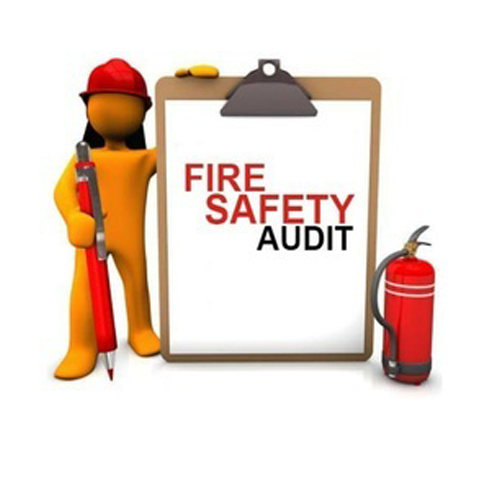Title Page
-
Document No. KAL HSA 1
-
Audit Title
-
Client / Site
-
Conducted on
-
Conducted by
-
Location
-
Personnel
Fire
Prevention
-
A suitable and sufficient fire risk assessment has been completed by a competent person and is held on site?
-
Staff are trained in fire prevention at induction and at regular intervals as part of a training plan?
-
Records of this training are easily accessible and include detail of what the training involved, list of attendees and name of trainer?
-
Storage areas are secure, tidy and contain no unauthorised substances which could increase fire risk?
-
There is a compliant 'no smoking' sign displayed at the the entrance to the building and in other appropriate areas?
-
Smokers only use designated smoking areas?
-
Key areas are secure from unauthorised access, e.g. stores containing foam matting, plant rooms and boiler rooms?
-
There is no evidence of illicit smoking in toilet areas, or other out of sight public access areas?
Detection & Warning
-
Records of weekly fire alarm testing by staff?
-
Staff test a different call point each week so that all will be tested in a three month period?
-
There are easily accessible records to demonstrate the above?
-
The fire alarm system is serviced by external competent contractors every 6 months?
-
Fire detectors located in appropriate places?
-
Can the alarm be heard in all parts of the building?
-
All employees are familiar with the fire alarm and can distinguish it from any other alarm in the building?
-
All employees understand how to raise the alarm?
Means of Escape
-
Can everyone evacuate the building without being placed at risk? This includes arrangements for those with impaired mobility.
-
Time taken to evacuate is included on records of fire drills? Should take no longer than 3 minutes.
-
Fire exits are easily identifiable, open easily (in the direction of escape) and are unlocked when the building is in use?
-
Fire doors are undamaged? Have doors been damaged by moving equipment?
-
Escape routes are kept clear of stored equipment and obstructions such as vending machines?
-
Escape routes are supported by effective emergency lighting?
-
Emergency lighting is tested monthly (for function), six monthly (for third of rated value) and then annually (for full duration of light)?
-
All key staff take part in fire drills at least twice per year?
-
Do some drills involve the public?
-
Do records of drills include staff taking part, numbers of public, time taken to evacuate, comments on the success of the drill?
Fire Fighting Measures
-
Within fire prevention training, staff receive training on the types of fire extinguishers and what they can be used for?
-
Any staff expected to act as fire wardens have received suitable hands-on training in the use of fire extinguishers?
-
Are extinguishers appropriate to the types of hazard?
-
Do staff carry out weekly recorded checks on fire extinguishers for signs of misuse?
-
Are extinguishers serviced annually by a competent contractor? Is this recorded?
-
Extinguishers are located in obvious, easily accessible positions that can be clearly seen?
Fire Emergency Plan
-
Actions in the event of a fire are detailed within the EAP?
-
Does this include the roles and responsibilities of each group of staff?
-
This plan details the appropriate fire assembly point and site of refuge arrangements?
-
Does the plan detail the arrangements for evacuating people who are especially at risk, such as contractors, young children and those with disabilities?
-
Does the plan detail any machines, gas or power supplies that require isolating in the event of a fire?
-
Does the plan state how the emergency services will be summoned?
-
Is there a designated person to liaise with emergency services when they arrive on site?
-
Does this person have access to a building plan and keys to all areas of the building where the emergency services may require access?
-
Does this person have access to a mobile phone in order to make appropriate calls?
-
Fire actions signs displayed by manual call points?
-
Emergency grab bag readily available containing appropriate contents?













